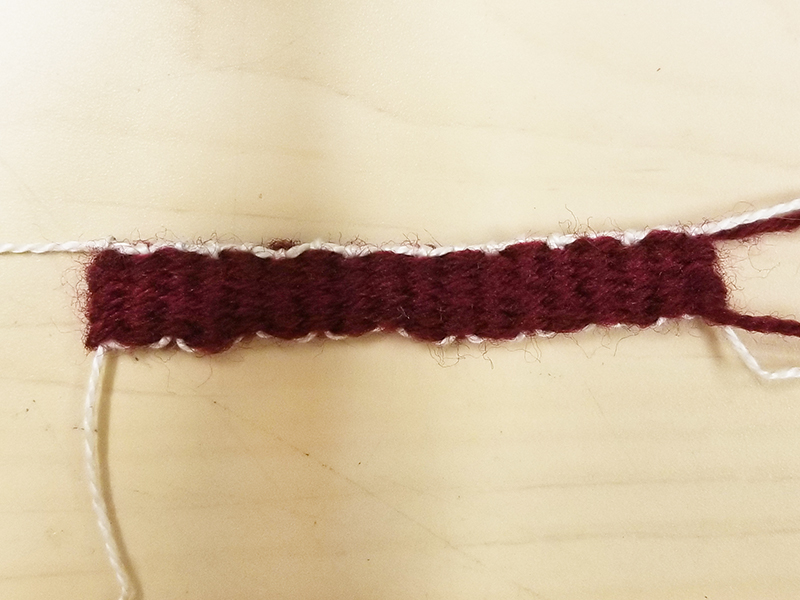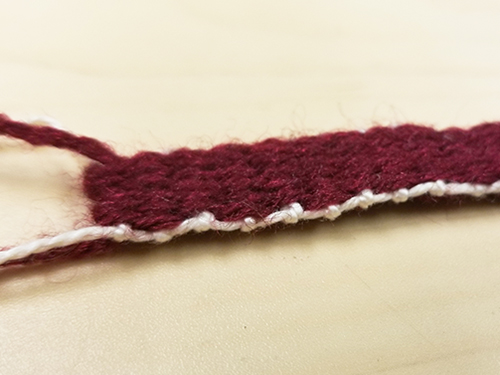Shanel Wu
They/them. PhD student: smart textiles, weaving, computational craft, hardware hacking.
Shape Weaving Experiment 3
by Shanel

Using the pin loom again, I warped the loom as in experiment 2, making sure that I had an even number of warps. I wove the weft in a weft rep weave (over 2, under 2 // under 2, over 2; i.e. plainweave stretched widthwise). This essentially treats each pair of warps looped over a pin as a single end.
Once I finished weaving, I inserted another yarn (same as the cotton warp) in plainweave, which results in every loop having a yarn inside. I then tighted the warp like in experiment 2.
The tightened warp locks in the last pick of plainweave so that the piece is secure. Using yarn identical to the warp also makes a fairly inconspicuous finish.

The bottom edge is already locked against the wefts.

If I designed this warp system correctly, I should be able to pull out the last plainweave pick and easily unravel the piece.